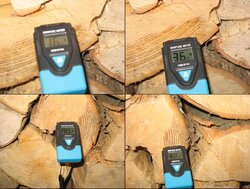The bottom two layers of my short stack outside (haven't needed to dig into the LONG stack yet), have had some snow fallout on them, from pulling back the tarp to get wood.
Would you bother to knock the snow off and bring those pieces into the house and let them air dry and use them, or leave them for next season's stacking? How much of the exposure to snow takes splits out of the running for this season?
How long would you let the wood that has had snow on it (seasoned wood, prior to the exposure to the snow) dry, before using it?
I sure am looking forward to the "woodshed" we'll be putting in next summer !
!
-Soupy1957
Would you bother to knock the snow off and bring those pieces into the house and let them air dry and use them, or leave them for next season's stacking? How much of the exposure to snow takes splits out of the running for this season?
How long would you let the wood that has had snow on it (seasoned wood, prior to the exposure to the snow) dry, before using it?
I sure am looking forward to the "woodshed" we'll be putting in next summer
 !
!-Soupy1957


